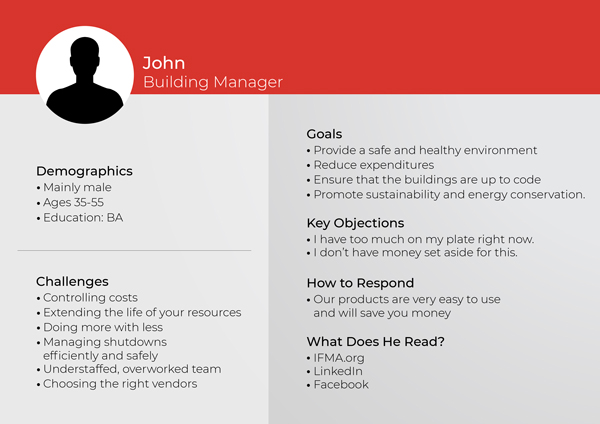As marketers, why do we love buyer personas? Because we believe they will help us get more sales. We understand that personas are one of the first things we need to pay attention to when we’re creating a campaign. We know that aligning personalized content with our personas can make a big difference.
Because of the digital revolution, personas don’t provide marketers with as many benefits as they used to. In this article, we will explore how to get the most out of personas and how to use them to create top-quality personalized content.
Personas give you a theoretical look at who your target audiences might be. They help create a lens through which you can view products or services from the perspective of real people. They help you build empathy and customer centricity. They personify needs and requirements.
Many people ask whether personas are the same as segmentation. The answer is that they are related. SAILTHRU says that “Market segmentation identifies pieces of your audience based on broad commonalities like geography, profession, or marital status, while personas are highly specific representations of particular individuals within segments.” They say that segmentation is appropriate for high-level planning, while personas are appropriate for more tactical campaigns. For the purposes of this piece, we will stick to personas.
Let’s look at two examples. First, let’s look at an industrial fan company. This company would be likely to identify three personas: facilities managers, architects and business managers. The brand would come up with archetypal characteristics, including age, gender, job title, type of company they work for, education, hobbies and watering holes (where people go to get information) to help their content marketing and design teams provide a good customer experience for these audiences.

For a second example, let’s look at a software-as-a-service (SaaS) company. A SaaS company might use these personas: users, managers/decision-makers and CFOs. Again, they would identify characteristics associated with each of these audiences.
Creating personas is a valuable practice from the perspective of understanding your target customers. Here are a few things to look out for to make sure your personas are as helpful to you as possible:
Today’s customers are demanding more from companies. They expect:
They want to feel remembered, understood and in control.
These customer demands clearly point to the need to deliver personalized experiences.
So how do you go about delivering personalized experiences? You start by recognizing that personalization starts with data. Using an AI-driven strategy, you can predict what someone will view or buy based on what they interact with over time. Especially when you leverage AI in e-commerce, you can easily predict what someone will view or buy based on their past interactions.
The closer you come to a 360-degree understanding of your customer, the better. This means integrating big data coming from the web, mobile, social media, email and in-person channels.
Once you analyze your data, you have a better understanding of how your ideal customer engages and shops for your products throughout the buyer journey. With the right data, marketers can understand what resonates and drives behaviors.
When devising a personalization strategy, it’s important to think about the customer first, not about your products and services. Only then can you create tailored, value-added messages and incentives targeting your audience seamlessly across channels.
Personalization enables your target audience to see the products, services and information that they care about in a personalized way that feels close to a one-on-one experience.
Personalization lets you target the proper audiences, generate brand loyalty and increase engagement and conversions.
You will start by developing detailed personas and then use these to move on to personalization, where you target your customers with one-to-one, actionable campaigns.
When you treat people like individuals, they will feel the difference and be more responsive to your marketing campaigns, giving you better sales and loyalty.
Start with Functional Attributes: In the beginning, as is the case with most relationships, you know very little about the person (or target audience) you’re dealing with. The attributes you want to focus first on are the functional attributes of the person, including their role, their title, their position on an organizational chart, the business unit they are a part of, and a few firmographic details about the company such as company revenue, number of employees and locations.
Follow This Up with Emotive Attributes. These include the initiatives the person is working on, their greatest challenges and their most important needs. It’s also important to understand their lexicon. For example, if you’re talking about managing student careers, will talking about an ambassador program have any meaning for your target audience?
Next, Look at Decision Process Attributes. The buyer role, the level of engagement and the decision drivers (financial, operational, strategic) are key.
Finally, Look at Behavior Attributes. Here, you’re looking at engagement with different types of assets, interaction-type preferences (reading vs. video vs. webinar) and favorite watering holes.
You’ll provide email addresses to an augmentation application such as LeanData or ZoomInfo, who will then provide you with much of this data.
Once you have the data from the augmentation application, you will put it in your automation platform. You will then segment it to qualify different personas. For example, you might clump all of the CIOs together. Your next step will be to build messaging for this target audience and determine which content types will work best. Once you have campaigns, you will use automation to build multiple levels of personalization (e.g., using their name, talking about the type of company they are working for and answering the emotive attributes in a way that addresses their needs and challenges) in a language that is well suited to them.
If you would like to discuss how Position2 can help you out with personas and personalization, please reach out to us at personalization@position2.com. Thanks.